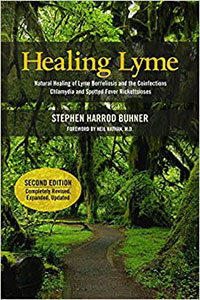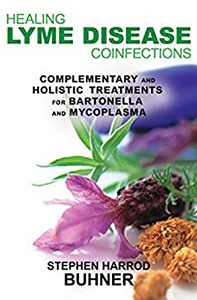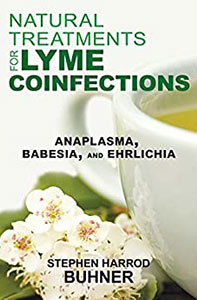Dear Stephen,
I have been taking cat’s claw, knotweed, and teasel root for the last 4 months, and am now at the highest dosage. In the last month I also began taking smilax, periwinkle, and andrographis, still at pretty low doses. About 2-3 months ago my symptoms worsened greatly, mostly muscle/joint pain and sometimes headaches. I assume this was a herxheimer reaction. Then I started to feel better, but within the last month some of my symptoms have worsened again (muscle/joint pain, now much more frequent and worse head aches, eye pressure, and much increased fatigue issues). Is this a second wave of herx I am experiencing or is it just natural for there to be ups and downs with symptoms?
Stephen’s response:
There are often ups and downs during the process. You might try adding cordyceps (2000 mg 3x daily –
sagewomanherbs.com) and Chinese skullcap root tincture (1/4 tsp 3x daily –
elkmountainherbs.com) and see if it helps.
Stephen
-
Stephen Harrod Buhner was an Earth poet and an award-winning author of twenty-four books on nature, indigenous cultures, the environment, and herbal medicine including the acclaimed book Healing Lyme: Natural Healing & Prevention of Lyme Borreliosis & Its Co-infections.
Stephen came from a long line of healers including Leroy Burney, Surgeon General of the United States under Eisenhower and Kennedy, and Elizabeth Lusterheide, a midwife and herbalist who worked in rural Indiana in the early nineteenth century. The greatest influence on his work, however, was his great-grandfather C.G. Harrod who primarily used botanical medicines, also in rural Indiana, when he began his work as a physician in 1911.
Stephen’s work has appeared or been profiled in publications throughout North America and Europe including Common Boundary, Apotheosis, Shaman’s Drum, The New York Times, CNN, and Good Morning America. Stephen lectured yearly throughout the United States on herbal medicine, the sacredness of plants, the intelligence of Nature, and the states of mind necessary for successful habitation of Earth.
He was a tireless advocate for the reincorporation of the exploratory artist, independent scholar, amateur naturalist, and citizen scientist in American society – especially as a counterweight to the influence of corporate science and technology.
View all posts













What form of skullcap are you referring to?
I noticed they have a few….the one I pulled up was Scutellaria baicalensis root, while the one I have at home is Scutellaria lateriflora.
thanks
I’m not associated with buhners practice but at a long time clinical herbalist, I’m pretty sure he’s referring to Scut Lat (scutellaria latiflora). Hope this helps.
In his book he mentions his preference for Scutellaria baicalensis
Stephen, are you able to consult with anyone to see what exact protocol she should take? We are searching for a Lyme Literate Dr thru ILADS and hope to have imput from your expertise.
When can we talk?
Thanks,
Regina De Palma, Mother of 43 yr old daughter w/Lyme over 10Yrs
Yes, it’s Scutellaria baicalensis!